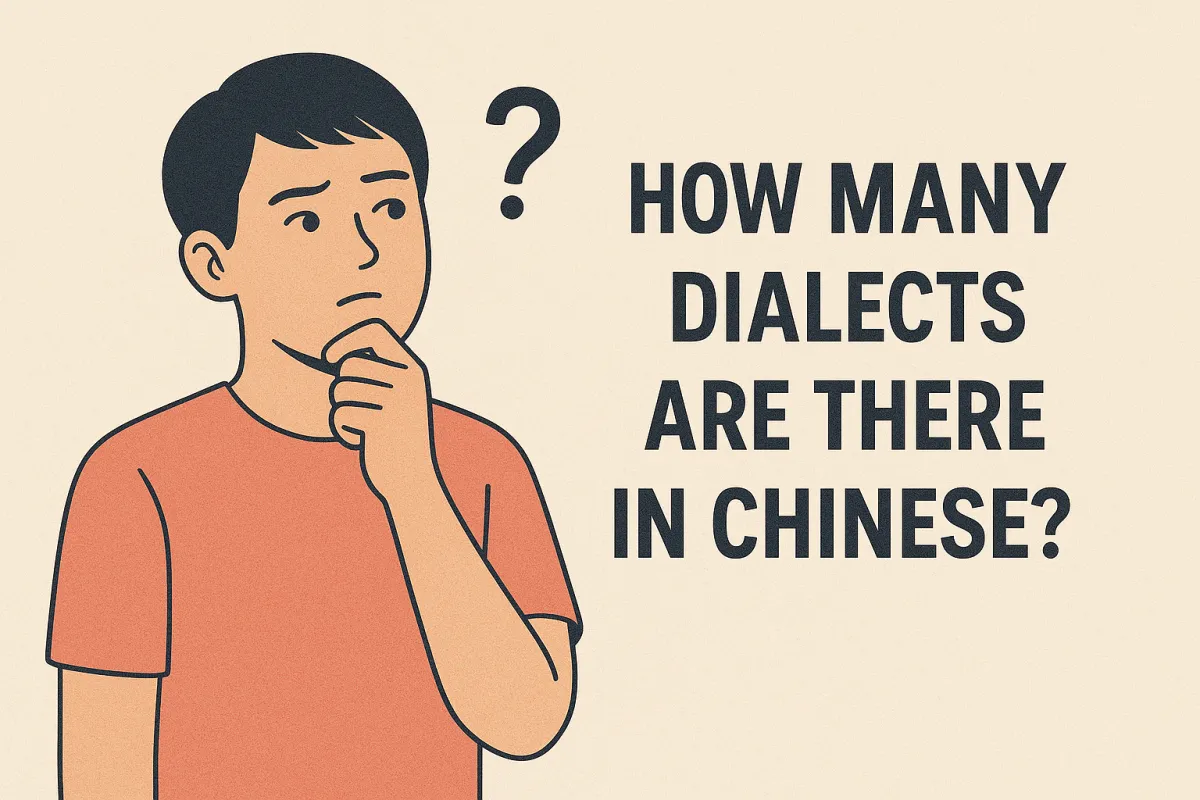
How Many Dialects Are There in Chinese?
How Many Dialects Are There in Chinese?
When people refer to the "Chinese language," they often think of Mandarin, but in reality, Chinese is not a single language—it’s a language family made up of hundreds of dialects, many of which are mutually unintelligible when spoken.
So, how many dialects are there in Chinese? Let’s explore the fascinating world of Chinese linguistic diversity.
What Is a Chinese Dialect?
In Western terms, a “dialect” usually refers to a regional variation of the same language (like British vs. American English). But in Chinese, the word "方言" (fāngyán) is often used to describe what are, in fact, entirely different spoken languages.
These dialects may share the same writing system—Chinese characters (Hanzi)—but they can sound completely different and are often not mutually understandable without study.
The 7 Major Dialect Groups
Linguists often classify Chinese dialects into seven major groups, each with multiple sub-dialects:
Mandarin (官话 / Guānhuà)
Most widely spoken; used in northern and southwestern China
Official language of China, Taiwan, and Singapore (known as Putonghua / Guoyu)
Cantonese (粤语 / Yuèyǔ)
Spoken in Guangdong, Hong Kong, Macau, and overseas Chinese communities
Rich in tones and used widely in media and entertainment
Hokkien (闽南语 / Mǐnnányǔ)
Popular in Fujian, Taiwan, and Southeast Asia
Includes sub-dialects like Teochew and Amoy
Hakka (客家话 / Kèjiāhuà)
Spoken by the Hakka ethnic group across southern China and overseas
Wu (吴语 / Wúyǔ)
Includes Shanghainese; spoken in the Shanghai and Zhejiang region
Gan (赣语 / Gànyǔ)
Spoken in Jiangxi Province and surrounding areas
Xiang (湘语 / Xiāngyǔ)
Native to Hunan Province
Each of these groups contains dozens of regional variants, and the total number of dialects across China is estimated to be in the hundreds.
Same Writing System, Different Sounds
Despite the wide range of spoken dialects, all Chinese dialects share the same written language—Chinese characters (Hanzi). This allows speakers of different dialects to communicate in writing even if they can't understand each other's spoken language.
For example, the character for "I" (我) is the same in Mandarin, Cantonese, and Hokkien, but the pronunciation varies:
Mandarin: wǒ
Cantonese: ngóh
Hokkien: góa
Are All Dialects Still Spoken Today?
Yes—but many are endangered due to urbanization, standardization, and the growing dominance of Mandarin. In schools, media, and public life, Mandarin is encouraged and sometimes required. As a result, younger generations may speak Mandarin fluently but only understand local dialects passively.
However, there's a rising interest in preserving regional dialects for cultural heritage, and in some areas, dialects remain strongly spoken and celebrated.
In Summary
There are hundreds of Chinese dialects, grouped into seven major families
Many dialects are as different from Mandarin as Spanish is from Italian
They share the same written script, even though their spoken forms differ greatly
Mandarin is the most widely spoken, but dialect diversity is a rich part of Chinese cultural identity
